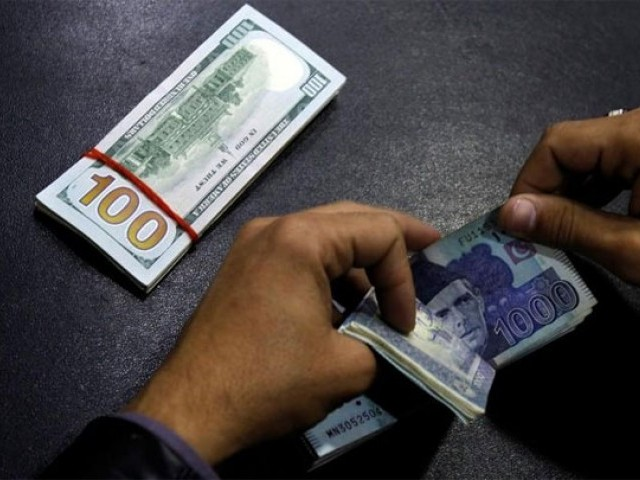Pakistani rupee getting strong, likely to hit 150 to dollar
Later, it is feared to return to depreciation phase in Q4

PHOTO: REUTERS
An economist at a leading bank, a currency dealer and a textile exporter, in different conversations, told The Express Tribune that the continuously strengthening rupee would peak out at around 150 to the US dollar by the end of March 2020.
Later, the rupee is anticipated to return to its depreciation phase around the fourth quarter (April-June) of the current fiscal year. “The rupee may return to 164-165 by the end of FY20,” the economist said on condition of anonymity.
So far, the rupee has regained 5.52% of its value or Rs9.07 in around past six months to 154.98 to the greenback on Thursday compared to the all-time low close of 164.05 in the inter-bank market on June 27, 2019, according to the State Bank of Pakistan (SBP).
“The recovery of the rupee came following a significant increase in the supply of dollars in the market and drop in demand amid a notable reduction in imports, improvement in exports and steady inflow of worker remittances,” the economist said.
The import of petroleum oil on deferred payments worth $3 billion per annum from Saudi Arabia since July, accumulation of dollars from the retail market by the central bank and receipt of loan tranches from multilateral and bilateral lenders including the International Monetary Fund (IMF) and the Asian Development Bank (ADB) also played a pivotal role in strengthening the rupee.
Moreover, the foreign investment of over $1.2 billion in the government sovereign papers, mostly treasury bills, since July, gradual return of foreign investors to the stock market and improvement in foreign direct investment (FDI) in different sectors of the economy like oil and gas exploration, power and agriculture also improved dollar supply and helped strengthen the rupee.
To recall, the central bank made a major change to the rupee-dollar exchange rate regime in May. It ended state control of the rupee and made it partially free. Market participants, mostly banks, determine the rupee-dollar parity, considering the supply and demand of dollar in the inter-bank market.
However, the SBP, the regulator, still has a role of monitoring the trend in the currency market and can take action if any market participant is found manipulating the situation. Forex Association of Pakistan (FAP) President Malik Bostan recalled that a parliamentary committee, set up by the prime minister to determine the causes of high inflation, had reported earlier that the massive unwanted depreciation of the rupee left it undervalued and caused the inflation. “The appreciation of the rupee may be seen in that backdrop,” he said.
Earlier, different governments from December 2017 to June 2019 let the rupee depreciate a massive 55.5% to an all-time low of 164.05 to the greenback on June 27, 2019 compared to 105.5 in the early days of December 2017.
Besides, tightening of regulations for the import of luxury goods, imposition of regulatory duty on the import of a number of items, turnaround in the current account balance from deficit to surplus in October and supply of dollars by currency dealers to the government also helped strengthen the rupee, he said.
“Currency dealers in open markets have provided $1.8 billion to the government in the past six months,” he said.
Depreciation in Q4
The economist said the rupee may return to the depreciation phase in the fourth quarter - April-June - of FY20, believing the government would soften some regulations to let economic activities happen in the country.
The expected measures may create demand for dollars for the import of raw material and finished goods, he added. Apart from these, the country is scheduled to make two big debt repayments over the next two quarters. The payments may build pressure on the rupee.
“Pakistan is estimated to repay a total of around $9-10 billion worth of debt in FY20. Of this, it has already repaid $4.4 billion in the past four months,” he said.
The economist said the central bank may continue to make extensive buying of dollars in the open market to build the foreign currency reserves. The SBP will also engage in this exercise to meet the IMF condition of building reserves to $12 billion sometime in the fourth quarter. The reserves stood at an eight-month high of $9.11 billion in the week ended November 29.
Published in The Express Tribune, December 13th, 2019.
Like Business on Facebook, follow @TribuneBiz on Twitter to stay informed and join in the conversation.



















COMMENTS
Comments are moderated and generally will be posted if they are on-topic and not abusive.
For more information, please see our Comments FAQ